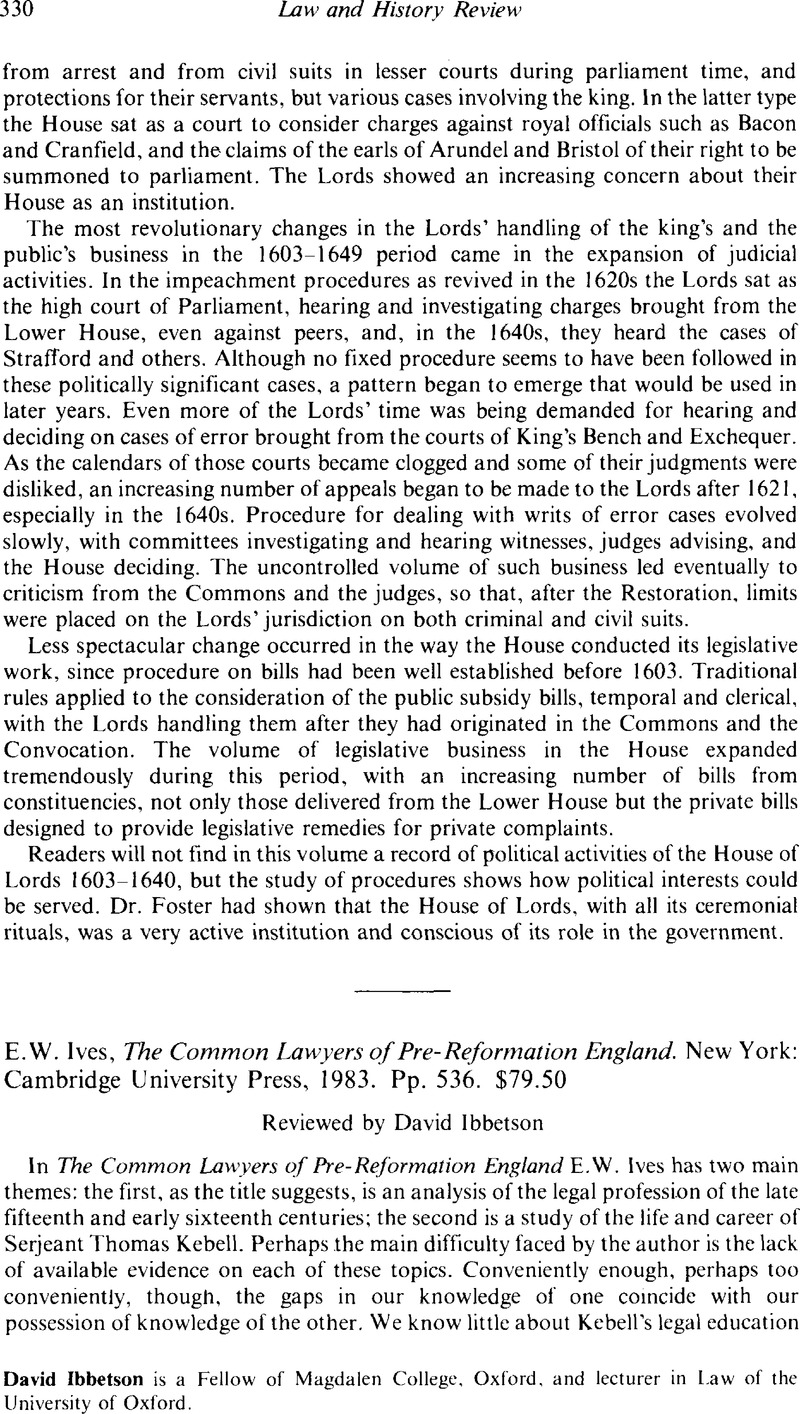No CrossRef data available.
Article contents
E. W. Ives, The Common Lawyers of Pre-Reformation England. New York: Cambridge University Press, 1983. Pp. 536. $79.50
Published online by Cambridge University Press: 28 October 2011
Abstract

- Type
- Book Reviews
- Information
- Copyright
- Copyright © the American Society for Legal History, Inc. 1984
References
1. The enormous predominance of references to Kebell in the Year Books of the time is one of the more puzzling problems connected with them. Why is it that there are so many more references to him in the Year Books of Henry VII than to any other lawyer? Ives's conclusion that it is a bibliographical accident, perhaps connected with an Inner Temple provenance of the Books, is a conservative explanation, but probably the best available.
2. The imprecisions of this method are well illustrated in the chapter dealing with Kebell's legal education. We know two things: Kebell was a member of the Inner Temple, and he delivered a reading on the Statute of Westminster I, cap. 1; but Ives is able to construct a plausible picture of Kebell's progress, based on the records of Lincoln's Inn. Nevertheless, it is no more than a plausible picture, with too many unknown quantities to enable us to put any great trust in it. He conjectures that Kebell was born around 1439 (the limits are about 1436 and 1446), and, taking a conjectural age of fifteen for his entry to his Inn, he reaches a conjectural date of entry of around 1454. From this we can make an intelligent conjecture as to the date of the only solid evidence that remains to us, Kebell's extant reading on Westminster I. Ives suggests that this is probably his second reading, delivered probably in c.1472, as part of a series of readings on Westminster I, probably in progress in the Inner Temple in 1474. But even the Lincoln's Inn records themselves show considerable variation in the speed of advancement through the hierarchy of the Inn (the statement that progress to reader was invariably in order of seniority and automatic ‘for those who had established themselves at the Westminster Bar’ (pp. 45-48) is either self-proving or wrong), and we could build up many very different pictures of Kebell, which are consistent with the available evidence. The reading on Westminster I could be a first reading in the early 1470s (following J.H. Baker, ‘The English Legal Profession, 1450-1550’, in Prest, Wilfred R., Lawyers in Early Modern Europe and America (London, 1981Google Scholar) in taking twenty one as the ‘normal’ age of entry to an Inn of Court in the late fifteenth century), or a reading given on his creation as Serjeant in 1486 (if, as seems likely, such readers were able to choose their own topics). The fact is that it is extraordinarily difficult to generalize about the fifteenth-century Inns of Court; and coupling this with the lack of hard facts about Kebell's life we are reduced to applying necessarily inaccurate generalizations to more or less intelligent guesses.
3. On the above, see Guy, J. A., ‘The Development of Equitable Jurisdiction, 1450 1550’, in Ives, E.W. and Manchester, A.H., eds., Law, Litigants and the Legal Profession (London, 1983) 80Google Scholar.




